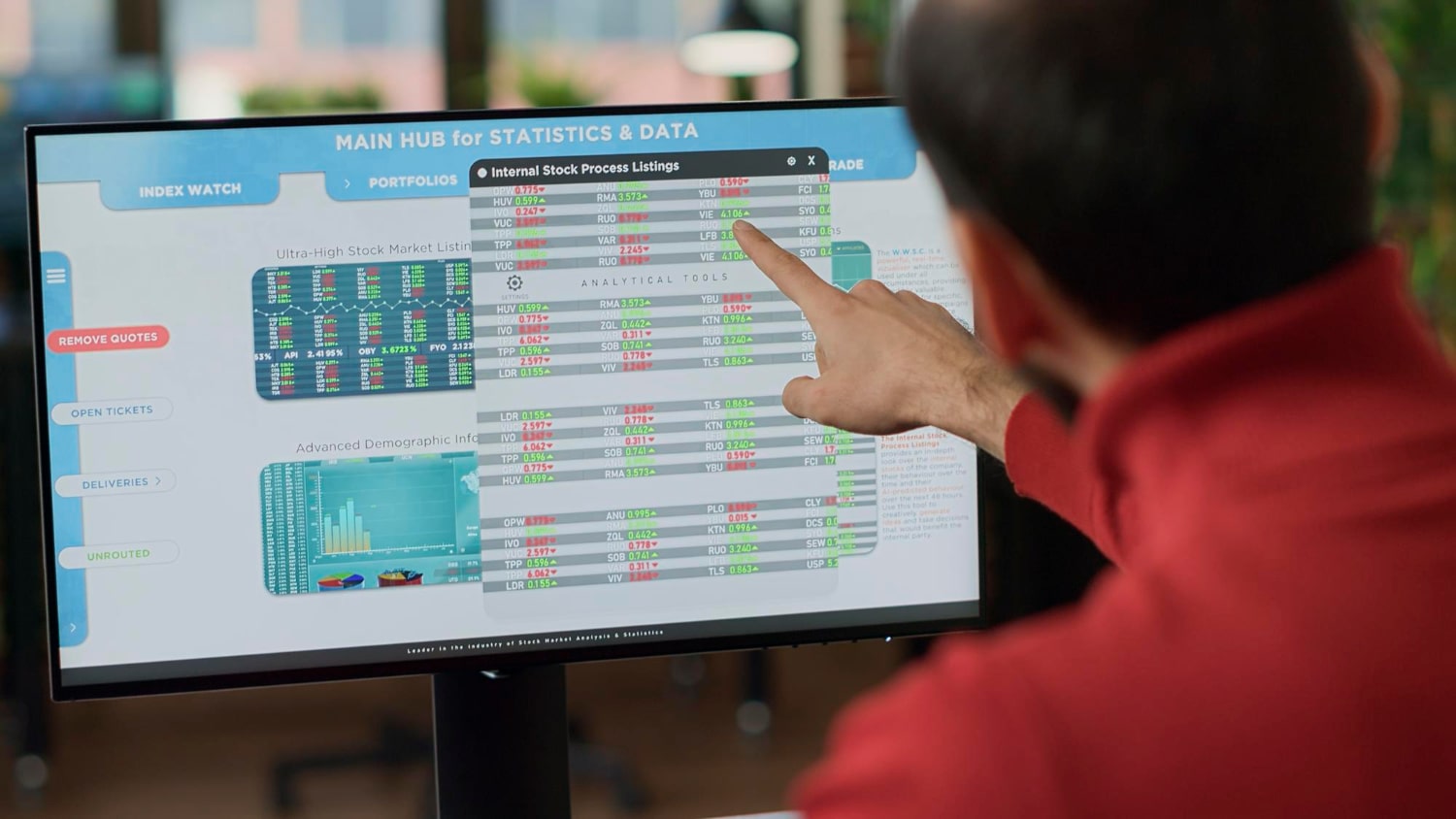The taproom is the heart of your brewery. It’s the place where customers use nearly all of their senses to interact with your product — some for the very first time. Inviting people into your brewery space takes the entire customer experience a step further, moving beyond the distribution network. It allows you to control the branded experience and offer customers an inside look at how the beverage they’re drinking comes to exist in the first place.
But operating a taproom comes with its own unique set of challenges. Many taprooms operate less efficiently and less profitably than they could if they identified and implemented even a handful of the best practices we’ve outlined in this post.
P.S. Prefer to download a PDF version that you can read later or distribute to your team? We’ve got you covered.
Table of Contents
Taproom Operational Analysis
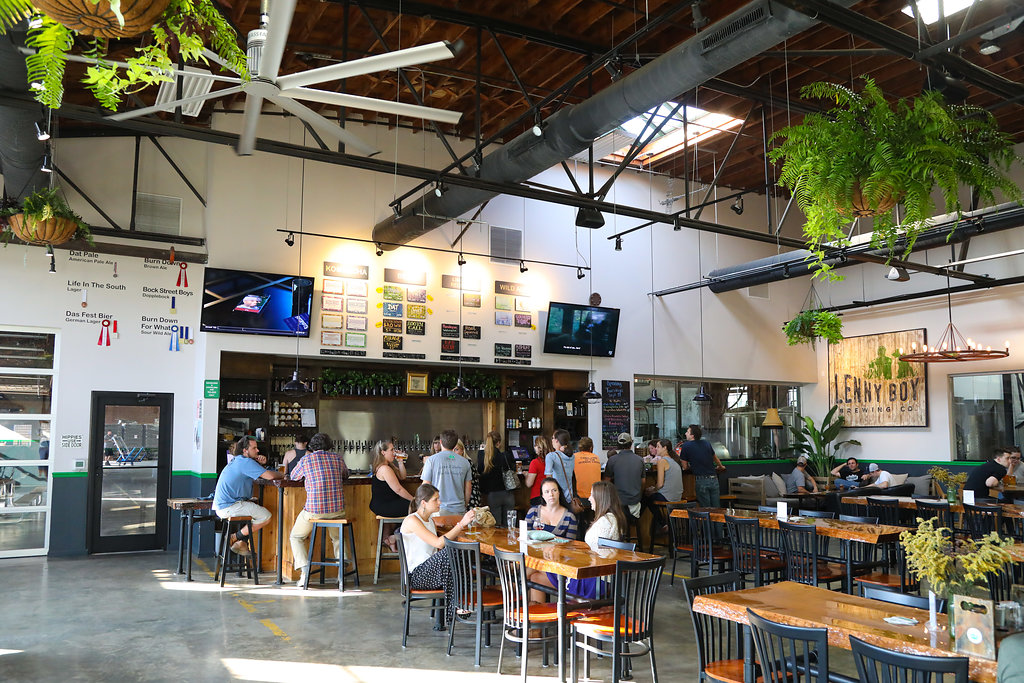
Conducting a self-audit of your taproom’s internal policies and procedures is the first step in moving toward a streamlined solution. Identifying potential issues within the taproom’s business model, everyday operations, and processes allows management to make informed decisions.
Self-Audit Questionnaire
Here are a few questions to ask in order to determine just how well your taproom is currently running:
Administrative Operations:
- Does your taproom have standard operating procedures (SOPs) formally documented?
- How often are the SOPs updated?
- What are the biggest obstacles in the taproom?
- What technology solutions do you use in the taproom?
Financial Operations & Compliance:
- How many times per week are you performing financial reconciliation in the taproom?
- What is the threshold for over/under on taproom cash drawers?
- How many drawers do you have open during peak hours?
- Is your POS set up in alignment with your financials?
- How is merchandise reconciled?
- How is your inventory currently tracked?
- What reports are you reviewing weekly, monthly, and seasonally to determine profitability?
Human Resources:
- What is your current turnover rate for taproom staff?
- Do you have a training program for all new staff in the taproom?
- Do you have a dedicated employee for training new staff?
- What are the tasks that only Managers on Duty can perform?
Safety & Compliance:
- How often do you perform safety and cleanliness walkthroughs of the taproom?
- Is your taproom staff following all bonded area and compliance requirements when moving product?
Marketing & Sales:
- Is there any opportunity to increase revenue in the taproom through events, partnerships, or promotions?
- What is your process for selling private kegs?
- What’s your process for selling cans, growlers, or bottles to go? Do you allow preorders over the phone or via an ecommerce site?
- Are customers satisfied with their experience when they leave the taproom?
Ekos Insights: It’s impossible to know what you don’t know. This post is designed to offer a framework for identifying gaps in your knowledge and possible solutions that may fit your current business needs.
Building Your Taproom Team

If the taproom is the heart of the brewery, your taproom team acts as the circulatory system of the entire operation. These individuals will embody your brewery’s brand, bringing it to life each day — and night.
Standard Roles & Responsibilities
While not every taproom will have team members bearing these exact same titles, the responsibilities listed below each act as an essential part of efficiently operating a taproom. Here are a few standard roles and their corresponding responsibilities found in most taprooms:
Vice President of Hospitality leads every aspect of onsite visitation, creating an exceptionally elevated experience for all guests. This person is responsible for managing events, activities, and the taproom team. This position reports to the CEO.
Taproom (or Front-of-House) Director is in charge of both taproom and event teams, effectively ensuring that guests are satisfied with their experience. This person oversees taproom operations while managing ongoing events. This position reports to the VP of Hospitality.
Marketing Manager evaluates and identifies trends in online and in-person sales by analyzing the data and making predictions around future trends for developing cohesive sales and marketing strategies. This person manages all aspects of the business’s social media accounts, promotes taproom events, and manages the business’s brand presence. This position reports to the CEO.
Onsite Event Coordinator oversees all aspects of private and public event coordination from initial inquiries to planning and execution. This person delivers superior customer service and is an excellent communicator, manager, and multitasker who works with other staff to ensure a smooth booking process and successful execution of private and public events. This position reports to the Taproom Director or Marketing Manager.
Taproom (or Front-of-House) Manager is in charge of selecting, developing, and managing the performance of employees and ensuring that customers are satisfied with their experience. This person oversees daily taproom operations, manages inventory accurately, and assists in other areas as needed. This position reports to the Taproom Director.
Taproom Manager on Duty (or Shift Manager) selects, develops, and manages employees while ensuring that customers are consistently satisfied with their experience. This person occasionally serves as acting manager to oversee daily taproom operations and manage inventory. This position reports to the Taproom Manager.
The Merchandise Manager (or Merchandise Coordinator) organizes and oversees all activities related to selling, purchasing, and tracking merchandise. This position reports to the Marketing Manager.
Taproom Servers are in charge of serving patrons, providing information to help with beverage selections, presenting ordered choices, and ensuring that guests are satisfied with their experience. They provide top-quality customer service while maintaining taproom ambiance and transaction accuracy. These positions report to the Taproom Manager and Taproom Manager on Duty.
Ekos Insights: Based on the surveys and research we have conducted with a variety of breweries, cideries, and taprooms all across the country, the information outlined above is our recommended way of structuring your team — however, you can always adjust based on your business’s size and needs.
Hiring Best Practices
One of the most important things you can do to increase efficiency and overall profitability in your taproom? Hire the right team. Satisfied employees are the backbone of any successful business, but building that perfect team isn’t an easy feat, especially if there isn’t a human resources department to lean on. For new or smaller businesses that lack an HR person or department, the role of vetting candidates and making hiring decisions often falls to department heads and other people in management.
Here are a few tips to improve your hiring process, no matter the role.
Crafting the Perfect Job Description
Writing a job description to draw in the right candidates can be an overwhelming concept, especially if you haven’t written one before. Start by writing down all of your expectations for this role. Ask yourself some of these questions:
- What are the basic functions of this role?
- Who will this person report to?
- What type of background experience do you hope to see in a candidate?
- What do you hope this person will bring to your team — not just skills, but attitude or personality?
- What soft skills and strengths are you looking for in this hire?
- Are there any red flags you need to watch out for with this role?
Creating a physical list will often help to organize your thoughts and clarify the type of person you’re looking to hire in this role. From here, you’ll find it much easier to compile a comprehensive job description that will attract optimum applicants.
Creating a Strong Interview Panel

The hiring process can be exhausting — for both the candidate and those in charge of vetting potential employees. Selecting the right interview panel depends on the position you’re looking to hire. For example, if you’re hiring new taproom servers, you’ll likely want to include the Taproom Director, Taproom Manager, and potentially loop in the Vice President of Hospitality during the final interview stage. For management roles, it’s important to include each department head in order to foster a strong, collaborative environment, particularly among your management team.
If you have strong members of the team whose opinions you value — and time allows — consider incorporating a peer interview portion in the hiring process. Not only will this help your team to get to know their potential new teammate, but it will give them an opportunity to take charge in their individual roles, and solidify the fact that management values their opinions in even the biggest decisions for the business.
Successful Interview Tactics
Here are three important questions to ask job candidates:
- What experience have you had that you see as being highly useful in this new role?
- What soft skills do you possess that make you a good team player — and why?
- Outside of your work and career, what other goals do you have for your life?
These questions will help you to understand who the individual is as a potential staff member, teammate, and person.
Ekos Insights: The top complaints candidates have in regards to hiring processes are lack of communication and delayed timelines. Set a good example for what working with your team will be like in the long run and maintain good communication and a fluid interview process for best results.
Importance of Team Communication Strategies
The best way to build a driven and collaborative team that will grow as your business grows is by fostering open communication strategies across all departments. Dedicating both the time and energy to clearly communicate with your staff each day will eventually lead to a more effective, productive, and satisfied group of employees.
Here are some important communication strategies to implement:
— Set clear expectations from the start: It’s important to have physical documentation available for employees, such as written job descriptions and company policies, that clearly set expectations around behavior, attendance, breaks, etc. at the beginning of employment.
— Schedule regular meetings: Create an open line of communication between management and staff by scheduling regular meetings to discuss things in both group settings and one-on-ones.
— Develop standard operating procedures (SOPs) for employees to communicate with management: Avoid wasted time and inefficiency by establishing an SOP for effective communication techniques between management and team members. It’s especially important for employees to be able to discreetly (or, in some cases, anonymously) submit feedback, issues, and complaints for management to review and handle appropriately.
— Encourage employees often: It’s easy to see when someone isn’t doing well in their role, but good work often gets overlooked in today’s world. Be sure to thank and reward employees often to keep morale high and people motivated.
— Train management to listen to employees’ feedback: Empower managers to actively listen and respond to employee feedback, regardless of its nature, in order to help your staff feel heard and appreciated.
Ekos Insights: Ensuring your employees feel heard by upper management is one of the easiest ways to boost employee retention rates and encourage employee loyalty.
Technology for Effective Communication
Because your employees will be scattered between the production floor, taproom, and back office, it’s important to use technology as a way to bridge this communication gap. Identify what type of technology your staff may need to effectively communicate with one another.
These can include:
- Messaging applications
- Email platforms
- Restaurant seating software
- Inventory or production management systems
Ekos Insights: Don’t overcomplicate things! Be sure to only introduce technology solutions that your team actually uses and finds valuable, and ask for feedback as you test new processes and systems for long-term effectiveness.
Taproom Technology & Software Integration
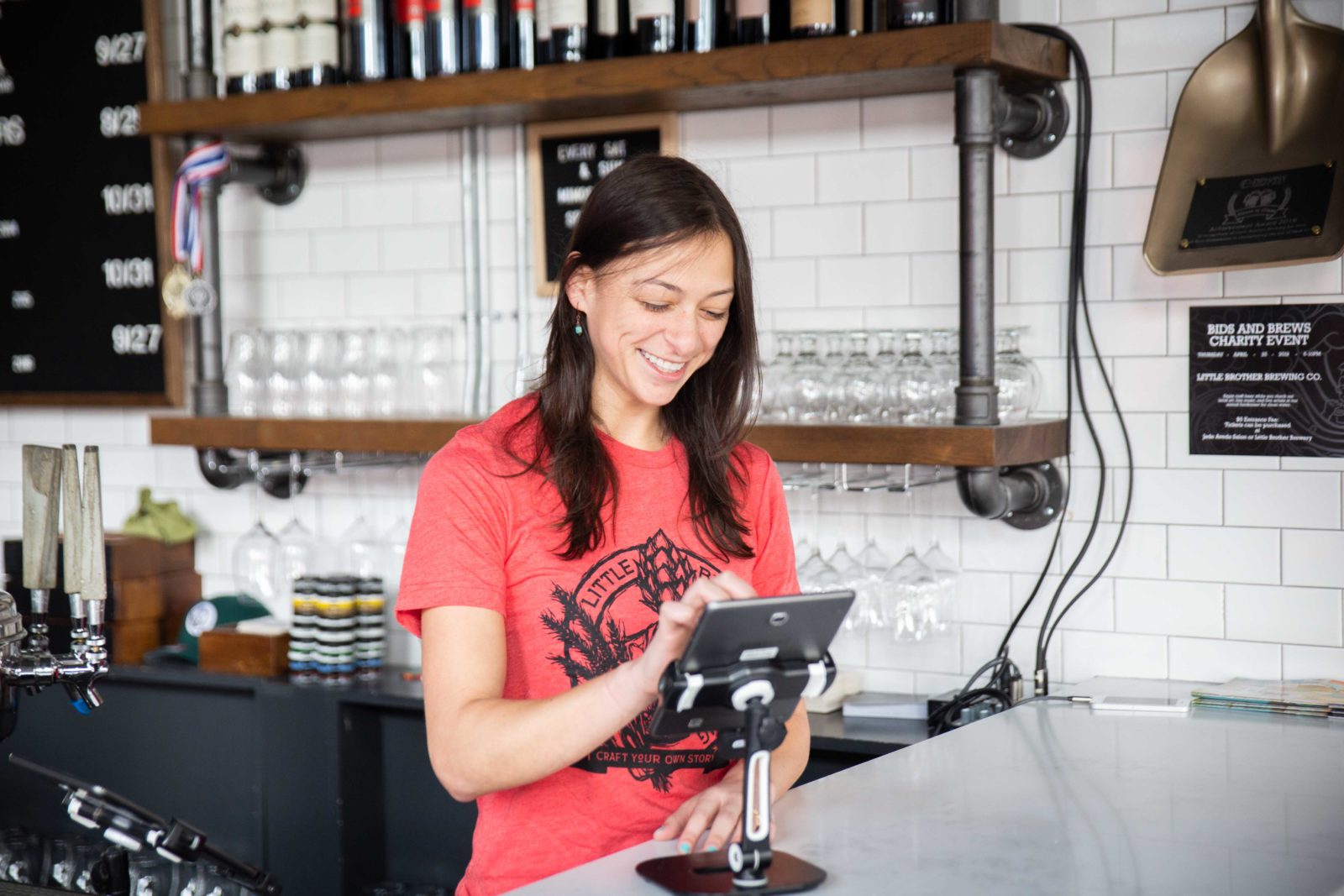
Technology can be an essential tool even beyond its use as a communication device for your staff. The right digital tools can streamline once-manual processes, which is a critical component of scaling your business. In working with many craft beverage businesses, we have noticed that technology solutions inherently increase efficiency by decreasing manual entry and duplication of efforts as well as minimizing the time taproom staff spend on administrative tasks.
Finding a comprehensive software solution can also offer valuable insights and analytics that you otherwise wouldn’t be able to see, such as inventory forecasts and sales metrics. This data allows you as a business owner to make educated decisions and optimize your resources.
Common tech solutions that you may want to consider include:
- Point-of-sale (POS) and ecommerce
- Inventory management
- Internal communication or messaging
- Keg tracking
- Restaurant reservation management
- HR management
- Standard operating procedure creation and management
- Training systems (FOH, BOH, OSHA, etc.)
With careful planning and intention, these systems can be set up, implemented, and integrated to maximize workflow and transparency. It is important to consider checks and balances for these systems, as well as creating an end-of-week, end-of-month, and end-of-year checklist for accountability and accuracy.
Successfully Building Your Tech Stack
Before you dive into comparing all different types of software, platforms, and management systems, you’ll need to be clear on a few key items:
- What are you looking to do with this piece of technology? (This can be anything from updating a time-consuming, manual process to increased security and accountability while your team is growing.)
- What top three things must this platform do for your business?
- What is your budget?
- What metrics do you need to pull out from this system?
- How much time can you dedicate to training employees on a system — or systems?
As with any major business decision, you should always test out a tech solution before investing. See how well it works in action, and address any new questions that might come up, before making a definitive decision.
When it comes to deciding on the right piece of technology to utilize in your taproom, another important question is whether to utilize one system for all processes or incorporate separate systems. There are benefits and drawbacks to consider for each:
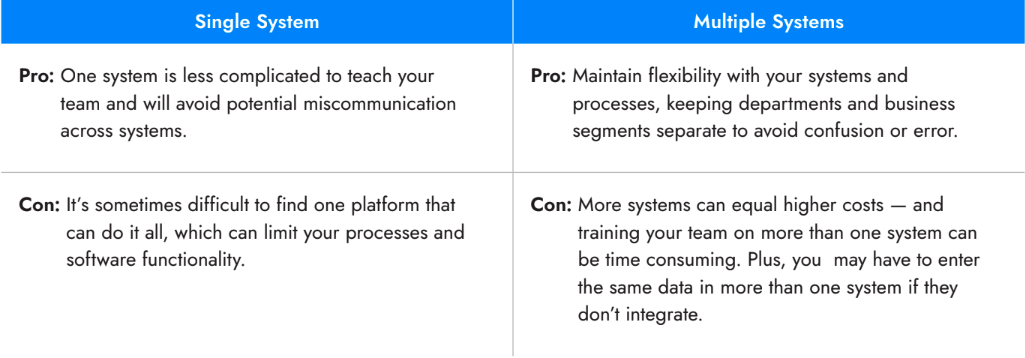
Point-of-Sale, Ecommerce, & CRM Systems
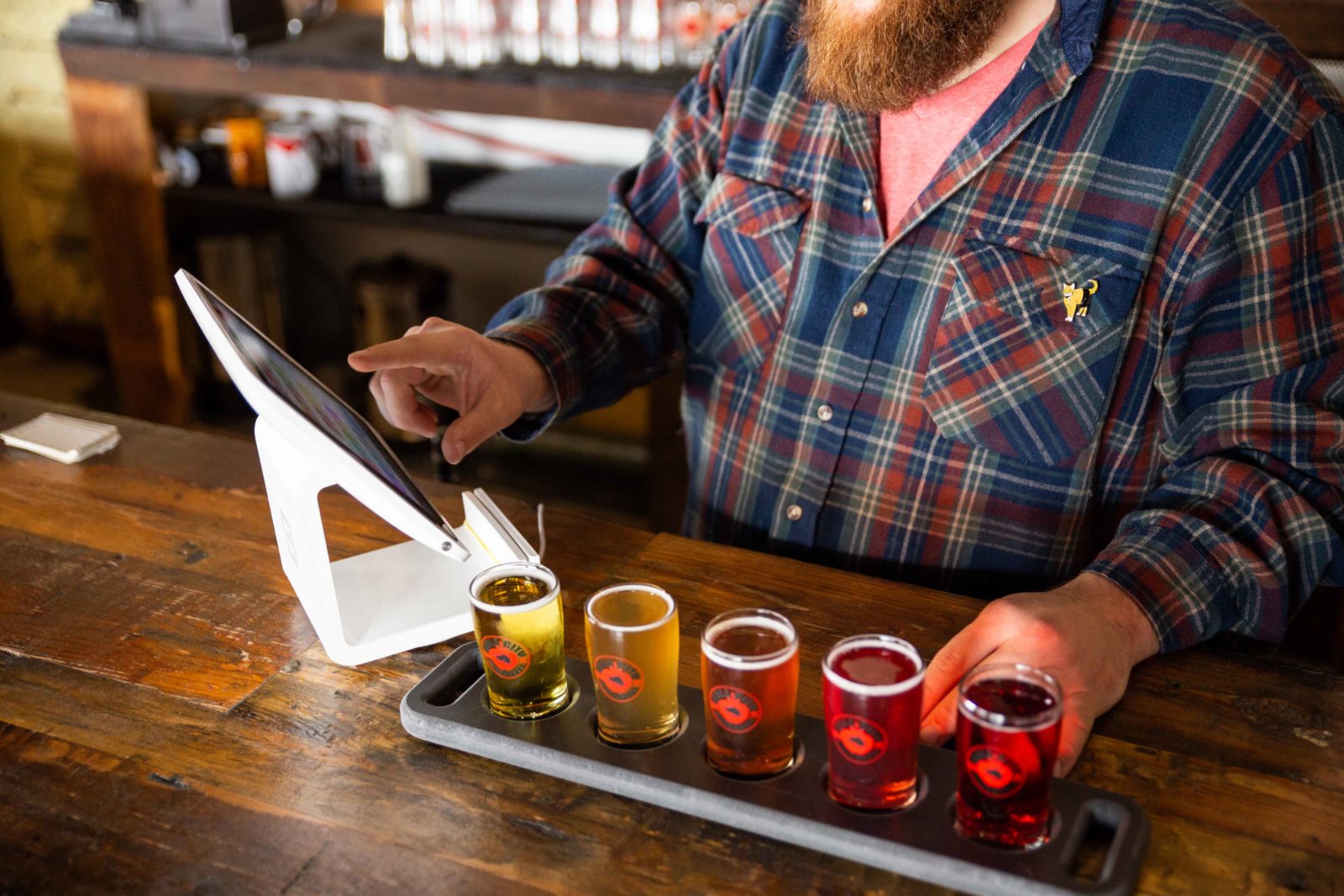
Utilizing a point-of-sale solution in your taproom is a given, but different solutions offer slightly different features, so it’s important to drill down the most important things this system must have. For example, selecting a POS system that easily integrates with your inventory management and accounting software can save you hours each month. If you’re hoping to set up an online store for preorders or product delivery, you’ll want to find a system that will play nice with your ecommerce platform.
Other questions to ask yourself when selecting your POS system:
- What’s our budget for this system?
- Is the solution that we’re considering payment card industry (PCI) compliant?
- Does it accept EMV chip cards?
- Are we able to accept contactless payment options with this system?
- What other software are we hoping our POS seamlessly integrates with?
- What other features do we want to make sure our POS has?
If your taproom is also going to accept online orders, you will need to look into an ecommerce platform so you’re not bogging down your staff with manual order processing in the POS via phone calls. Ecommerce is an essential channel to consider for your taproom because it not only increases your reach in an already-competitive market, but it also provides a new sales channel for your business. Once you’ve established your ecommerce website, you can enter or sync customer information to a customer relationship management (CRM) tool, which will offer you great marketing and sales insights down the road.
Whether you decide to offer curbside pickup, local delivery, direct-to-consumer shipping — or any combination of these options — it’s important to find a tech solution that will meet your needs as you grow.
Ekos Insights: There are a lot of younger generations whose primary mode of communication is digital. Not having an easy way for them to purchase or preorder from your taproom online could alienate some potential customers.
Inventory Management Software
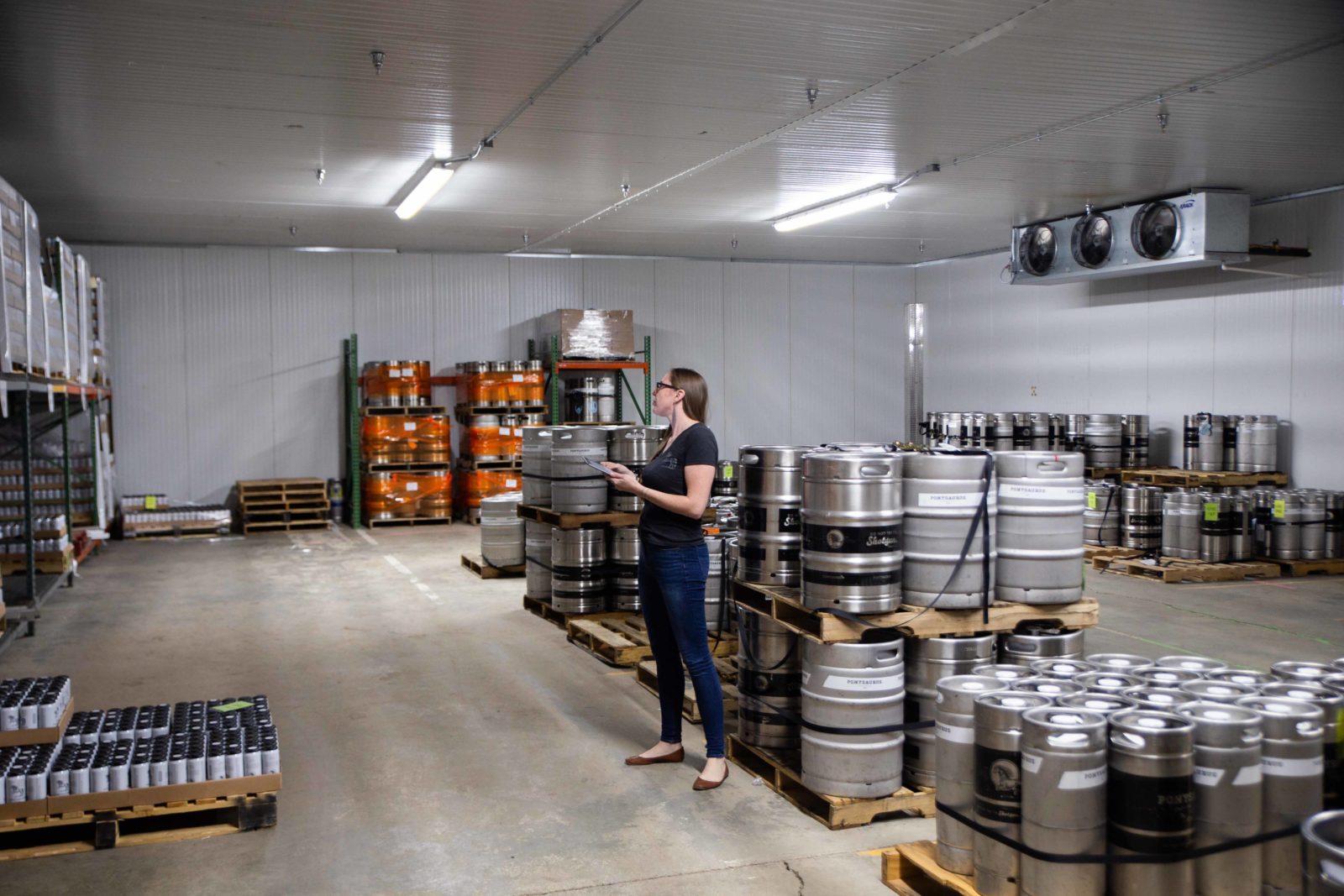
Efficiency is one of the simplest ways to save both time and money for any craft business. This is especially true when it comes to properly monitoring and managing your inventory and production processes. We know what you’re thinking — isn’t inventory management a back-of-house process? Sure, but what inventory goes into your taproom depends on what inventory leaves the production floor, so the two areas are inextricably linked.
While it’s easy enough to keep an eye on inventory when both your team and production volumes are small, inventory management is one of the most important pieces of software because it serves as a centralized hub for all data to flow through. This tool can help keep your team in sync and minimize human error, lost data, and time-consuming manual processes.
Here are a few important things to consider when selecting your inventory management system:
- Does this solution need to connect with other technology your business is using?
- How mobile is this software? Can your team access it on their phones and off-site?
- How often does the software need to be updated? Will that cause interruptions to your business?
- What do others have to say about their customer support?
- Will the data in the system be up-to-date in real time for the most accuracy?
- Is the value of the system worth the price?
- How does your team feel about it after demoing the product?
Answering these questions and more will help you to gather all the information you will need to make a confident decision about selecting the right inventory management software. Choose a provider whose product will add value to your business, and act as a partner while you grow.
Ekos Insights: Keeping track of large fleets of kegs doesn’t need to be an issue. Find a software solution that integrates keg tracking functionality and stop losing kegs!
Accounting Software & Integrations
If your business is already up and running, you likely already use some type of accounting software. But is it currently connected with your inventory and production management system? If not, you’re missing out on a seamless data sync that could save countless hours of reconciliation each month, which in turn can help you to dedicate your time and resources elsewhere as your business scales.
Proper integration will create individual journal entries in your accounting system each time you post an invoice, transfer inventory to tax-paid locations, or record product loss. Streamlined communication between each department will help to create a detailed record of every movement made in your business.
Plus, connecting your POS system with your inventory management system (in addition to your accounting software) can help avoid manual bookkeeping of taproom sales: taproom sales data will flow from the POS or ecommerce system, through the inventory management system, and then on to your accounting software seamlessly. This process is much faster and more accurate than updating each individual system one at a time, with the exact same information!
Ekos Insights: It’s important to evaluate the taproom from a financial perspective. Think of it as a separate entity — another vendor — who you “sell” your product to from the production department. This will allow you to analyze its performance from an outside perspective, apart from your other sales channels.
The Taproom Experience
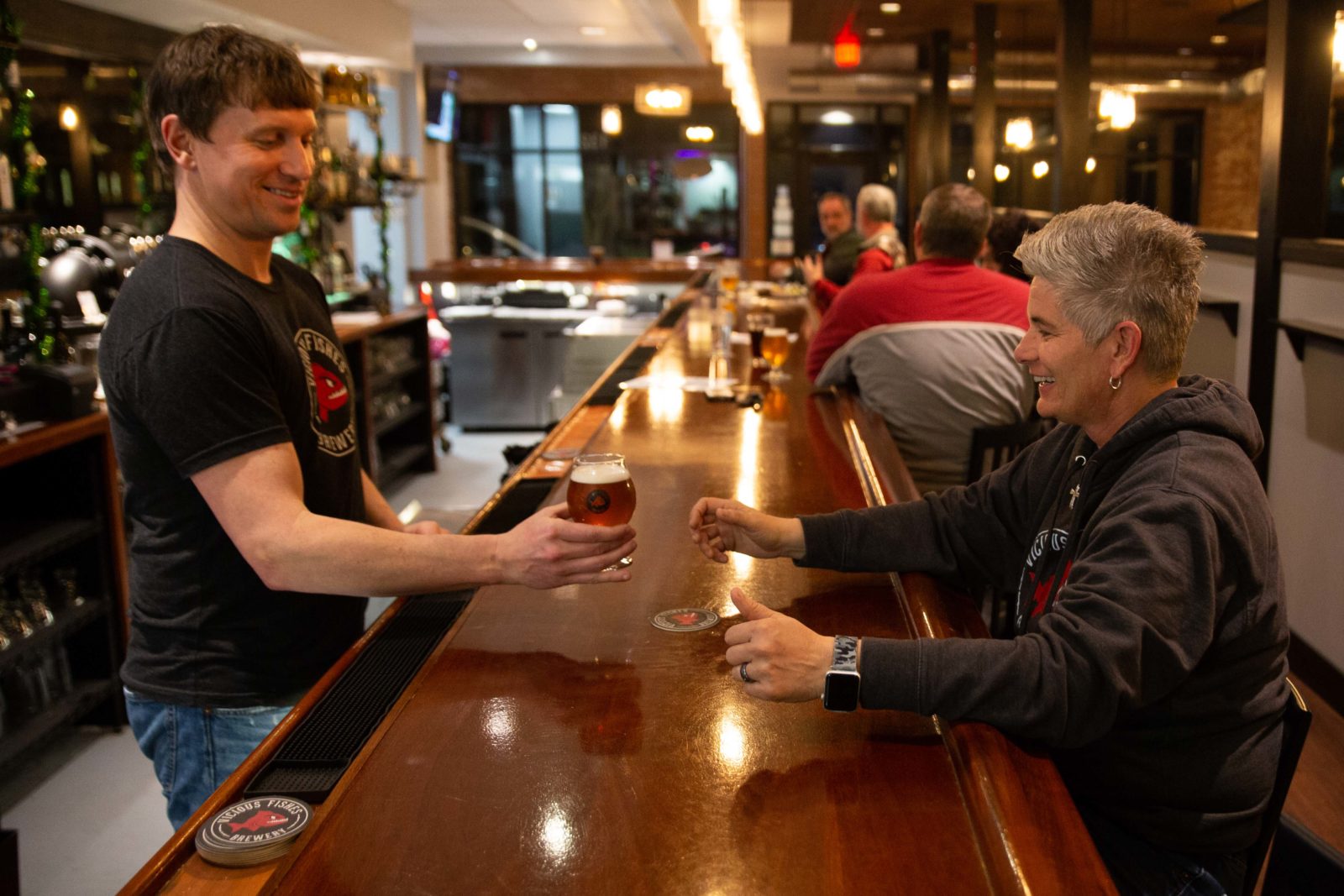
Think about this: before your guests even taste their beverages, their experience with your brand has already started. First impressions of your taproom count — it can greatly influence the likelihood that these patrons will return in the future and potentially recommend you to friends and family.
First, the environment of your taproom should exemplify your brand culture. The music, lighting, and overall ambiance in the space will either enhance or detract from the customer experience. If someone is visiting your space, chances are they’ve come in for your beer or cider. But how do you want your beverages to be experienced via the other senses? What will make the entire experience as pleasant and inviting as possible? These are important things to think about.
But beyond the environment you create in your taproom, what other offerings can you provide that will attract and retain paying customers?
Events
One of the most promising ways to encourage new and returning guests to visit the taproom is through events, from recurring weekly social gatherings to big seasonal bashes. Here are a few ideas to consider implementing in your taproom:
Recurring Weekly Events: Schedule a few recurring events in your space that coincide with typically less-busy days and hours. A few ideas include yoga classes, painting parties, live music, or trivia nights. Each of these events will attract a different type of customer, expanding your overall reach within your local community and introducing new people to your ciders or beers.
Seasonal or Holiday Events: Everyone loves a themed event, so take advantage of the time of year and schedule seasonal events that reoccur annually — from Saint Patrick’s Day and Independence Day to Oktoberfest and the winter holidays. For some, your taproom events will become part of their holiday traditions year after year! Don’t want to dive into big festival-like events? Try a holiday market and invite local artists and vendors to display their goods in or around your taproom. Guests can enjoy a beverage while perusing products from local businesses and finding the perfect gifts for their loved ones!
Private Events & Tastings: If you have the resources, invite patrons to enjoy an exclusive, personalized experience in your taproom when they rent out your space for a private event. This can range from company outings to baby showers to weddings — and more!
Ekos Insights: If you’re able, host a regular tour of your brewery of cidery, and invite guests to experience firsthand what goes into the brewing process behind the scenes. Connecting the work that goes into production with the drinks in their hands can leave customers with a new appreciation for your team!
Event Planning & Logistics
Events are an exciting way to expand your business’s reach within the community and introduce a lot of new people to your entire branded experience, but there are some important business factors to think about. Be sure to consider costs when planning these events, and ask yourself questions to make sure these are sustainable investments for you:
- What upfront costs should we plan for with our events?
- Will we organize these in-house or work with an external event coordinator?
- How will we market these events to ensure we have enough sales to cover the costs?
- Do we want to charge for the event or just promote beverage sales?
- What events perform best for our taproom and can we do more of them?
- Are we properly staffed and ready with enough product for the next event?
- How do we request patron feedback for these events to see what’s working?
Once you’ve honed the logistical process for your events, they will become a routine part of your taproom business.
Customer Engagement & Sales Tactics
Customer engagement is directly correlated with sales revenue when it comes to curating the perfect taproom experience for your guests. Guests who receive low engagement with staff are less likely to purchase a beverage or merchandise than those who are highly engaged throughout their visit.
Studies have shown that guests who are immediately welcomed into the taproom with a smile and a greeting are more likely to return or recommend the business to others. This simple acknowledgment lets your guests know you’re glad they came to visit and sets the tone for the rest of their experience with your entire brand. As a result, employees who offer the best customer service possible are the lifeline of any taproom. These individuals are responsible for bringing your business to life.
Ways patrons may evaluate their experience with your team can include:
- Are they patient and kind while serving?
- Are they knowledgeable enough about the product to help guests make the right decision based on their tastes and preferences?
- Are they readily available to take orders?
- Do they have a pleasant and fun attitude while working?
A good taproom server will ask questions and help guide your customers toward a selection they like. They will be passionate about the craft and offer the best service possible to everyone they interact with, from start to finish. And servers who gain trust and rapport with customers have a much higher chance of successfully upselling them with take-home growlers, cans, or merchandise!
Delivering a good overall experience automatically boosts sales — for both the taproom and potentially the merchandise and ecommerce sides of the business. Patrons may become loyal customers to your craft beer or cider, sporting brand-wear and sharing their favorite brews with others at their next barbeque or dinner party.
Ekos Insights: Once a customer has visited your taproom, it’s time to capture their information for future visits. Before a guest leaves, be sure to ask for an email address or mobile phone number to add to your CRM so you can send them promotions and invitations to future events. This will not only invite them back to your business’s physical space, but will also enroll them in your ecommerce or Direct-to-Customer (DTC) pipeline for future sales.
Marketing the Taproom
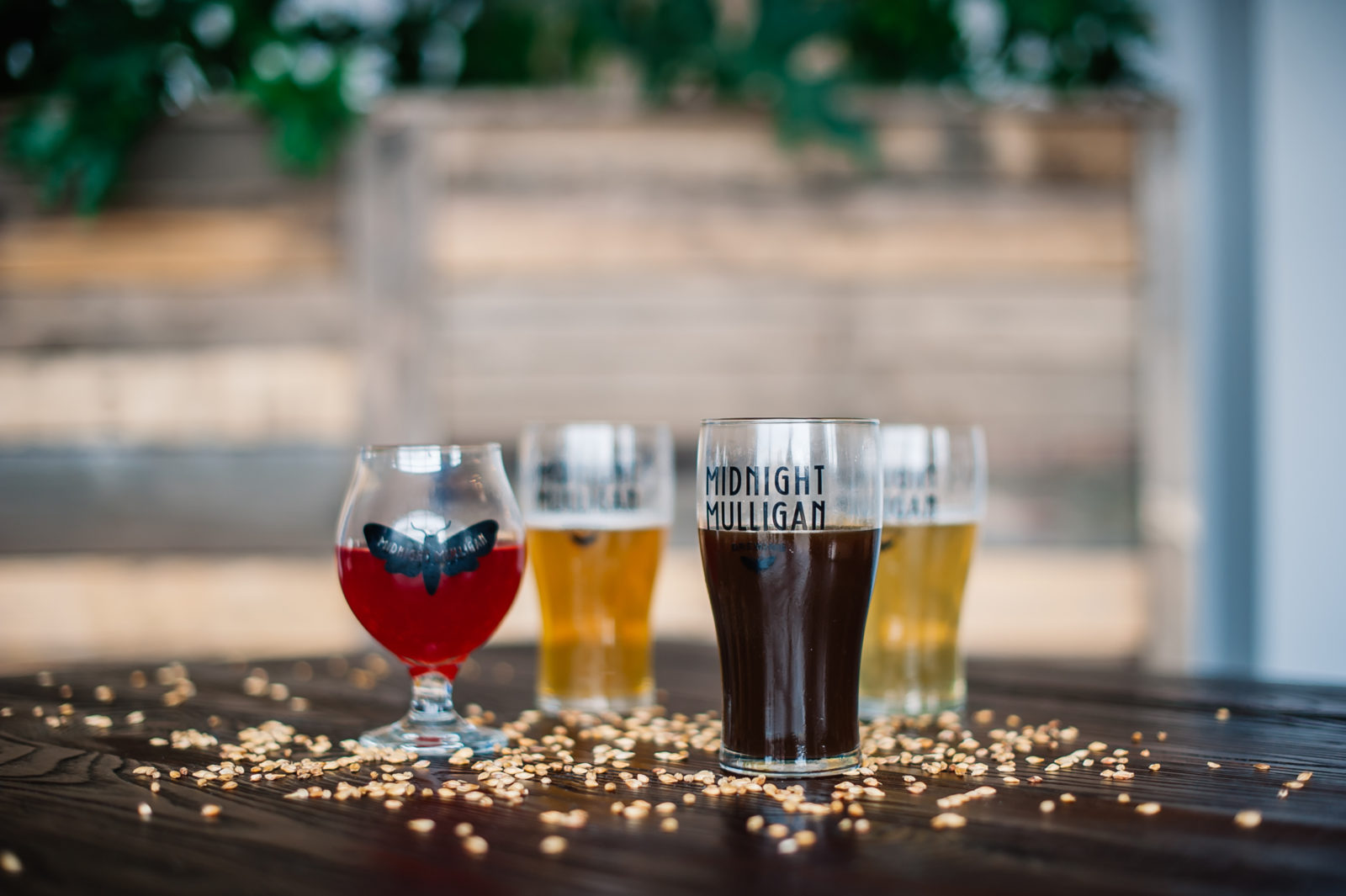
With the industry landscape becoming increasingly competitive, it’s vital to establish a marketing strategy for your taproom early on. First, it’s important to have a clear understanding of your target customer. Then you can begin to develop a marketing strategy that will attract and retain this type of customer.
Ask yourself a few questions to get clear on who you’re hoping to attract to your taproom, such as:
- What is your target demographic?
- Do you want them to be local to the area or visiting?
- What industry do they work in?
- What do they like to do in their spare time?
- How do they prefer to receive information from businesses they love?
- What do they value in life?
Once you’ve established a target customer, it’s time to determine where you will be most likely to find these particular patrons — and then develop your marketing strategy to creatively introduce your brand to these individuals. For most breweries and cideries, you will find a large portion of those target customers within the digital space.
Developing a Digital Marketing Strategy
Leveraging a digital marketing strategy to inform customers about new releases, merchandise, and taproom events is a strong place to start introducing your taproom to the world. After all, before someone comes through your business’s front door, they will likely do their research online to ensure your taproom is worth the trip! In order to gain a strong online presence, here are a few best practices you can implement.
Establish a Website
From looking for an answer to your most pressing question to finding the nearest taproom in town, Google is usually considered a reliable resource. If your taproom doesn’t have a website already established, this is a crucial first step. Be sure to maintain consistent branding, intuitive navigation, and clean design to avoid frustrating your site visitors. Your website should also include a mobile responsive design, meaning it can easily be viewed on a mobile device as well as a desktop computer. Mobile traffic accounts for more than half of all web traffic around the world. A website is also a way to seamlessly connect your marketing and ecommerce strategies, as your website can be tied into an online store or CRM for analytics tracking.
A cohesive website will always include the following information:
- Taproom location
- Information on products you serve
- Upcoming events or food truck schedule
- Hours of operation
- About or mission statement
- Contact form
Your website can also help to fuel a long-term email strategy, by encouraging visitors to register their email to stay up to date on the latest taproom news and events. To do this, you can work with your website designer to add a pop-up or banner on your homepage that encourages newsletter sign-ups.
Develop an Email Strategy
Creating a brief newsletter that goes out at regular intervals can have a real impact on your business. It’s a great way to update your customers on new releases, upcoming events, and other touch points that will encourage them to come back in for another drink!
Ekos Insights: Make your customers feel special by inputting their birthday into your CRM and scheduling a celebration email with a special promotion to hit their inbox a week in advance.
Stay Current on Social Media
No matter how you feel about social media personally, it’s an important lifeline for your growing business. Social networking sites are estimated to reach 3.78 billion users — with this number continuously growing every day. That being said, you should make an effort to get in front of your audience on at least one of these platforms.
Social media offers a unique channel to speak to your customers. It allows a behind-the-scenes look at your production processes, your team and their individual personalities, and the fun, memorable things that go on in your taproom on a daily basis. Get creative with your social media strategy, stay true to your business’s brand aesthetic, and encourage engagement any time you can.
Ekos Insights: Repost your customers’ posts and stories whenever your business is tagged. This is an easy way to reach new people and encourage more patrons to snap a picture to share with their friends whenever they visit your taproom!
Move Ahead with Digital Advertising
When organic (non-paid) online traffic isn’t as robust as you would like, it may be time to consider digital advertising. Digital advertising is a targeted, data-driven way to reach new consumers wherever they are. These ads can appear on various websites, including Google searches or social media browsing across a variety of platforms.
If you’re looking to quickly expand your website’s reach or online presence, digital ads are a great option to layer on top of your already-existing digital strategy. If no one on your team has experience setting up digital ads, you might consider hiring a consultant or agency to help you in the beginning — or hire someone with these skills.
Taproom Branding
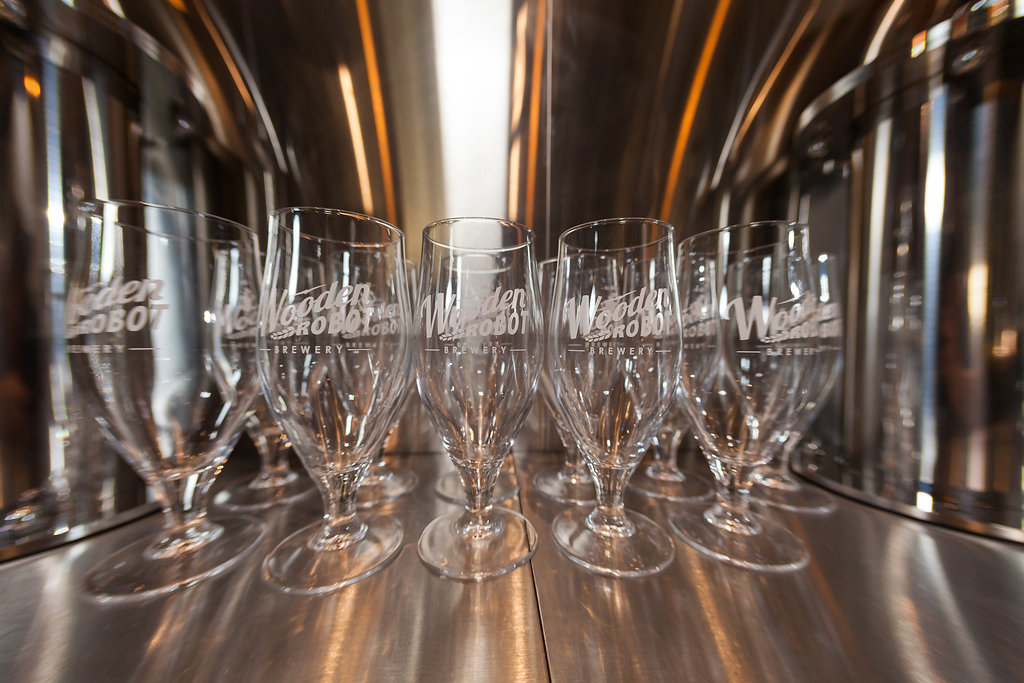
Of course, design is important — but a brand is made up of so much more than just the logo. Brands are intangible, meaning you can’t physically touch or see them. But they shape people’s perceptions of a business as a whole — including their taproom, staff, and all marketing efforts.
Branding is the feeling that your customer gets when they visit your location. That’s why it’s so important that your entire taproom as well as your product names, merchandise, and online presence should all feel like a unified brand that customers can easily identify with.
Merchandise Ideas & Best Practices
The primary function of branded merchandise is to promote your business beyond what you’re able to do online. Merchandise is a promotional product and encourages your customers to act as brand ambassadors, nonverbally recommending your taproom to everyone they encounter while wearing or using your gear.
But selling your merchandise is one thing: managing it properly to avoid frustration and supply chain backups is another issue entirely. Implementing a Merchandise Management Policy or SOP can help to get ahead of any issues related to potential inventory shrinkage, exhausting current inventory levels prematurely, and establishing profit margins on merchandise (growlers, glassware, swag, etc.).
The following best practices can help ensure your taproom’s accurate and consistent management of merchandise orders, allocations, and reconciliations.
- Limiting liability: Areas where merchandise inventory is stored must remain locked at all times. Access is limited to one primary and one backup representative who are responsible for pulling merchandise from inventory. No other employees may access inventory storage spaces at any time.
- Delegating responsibility: The primary merchandise representative is responsible for ordering, managing, and entering all merchandise items into the inventory management system. The merch rep will also restock low inventory items. If multiple locations exist, the merch rep will deliver new inventory when restocking is necessary.
- Inventory updates: The merch rep will perform physical counts at least once a month and compare physical counts to merchandise reports in the inventory management and POS sales systems. This will identify discrepancies to determine if they are within acceptable thresholds.
The time has come: you have the tools and knowledge necessary to establish a thriving taproom to host and showcase your product offerings. Not ready to go it alone? That’s what Ekos is here for. Schedule a call today to see how we can work together to improve your brewery or cidery’s efficiency and provide insights that help you make better decisions as you grow.


